By many accounts, Mumbai is undergoing the largest scale infrastructure overhaul it has ever had.
The ‘Maximum City’ is poised to reap the benefits as it gears up for the inauguration of five monumental projects in 2024, including one scheduled to open in January.
Encompassing areas such as road and highway development, aviation, railways, among others, these big-ticket infra projects are set to leave a lasting imprint on the city’s urban landscape.
1. Mumbai Trans-Harbour Sealink (MTHL)
Mumbai Trans Harbour Link (MTHL), the longest sea bridge in India, is scheduled to be inaugurated by Prime Minister Narendra Modi on 12 January.
The 21.8-km-long sea link will connect Sewri in Mumbai to Chirle in Navi Mumbai, reducing the travel time between South Mumbai and Navi Mumbai to just 20 minutes from the present two hours.
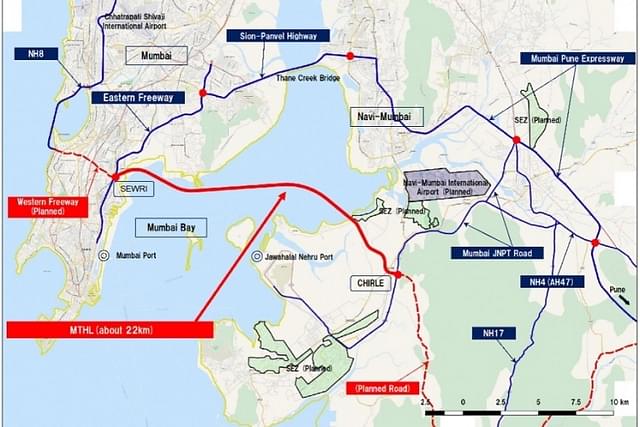
The bridge, of which 16.11 km has been built on water, and about 5.5 km viaduct is on land on either side, will have six lanes, each 3.5 metres wide.
This sea link project commences from Messant Road at Sewri, where it connects with the Eastern Freeway and ends on the mainland at Shivaji Nagar in Navi Mumbai, providing commuters with a seamless and swift 20-minute journey between these two key locations, free from traffic signals.
Named ‘Atal Bihari Vajpayee Sewri – Nhava Sheva Atal Setu’ after the former Prime Minister of India, late Atal Bihari Vajpayee, the Rs 17,843-crore fully access-controlled sea link has been executed by the Mumbai Metropolitan Region Development Authority (MMRDA).
2. Navi Mumbai International Airport (NMIA)
The first two phases of the long-awaited Navi Mumbai Airport will open for air traffic by December 2024, boosting the mega-city’s aerial connectivity that has been constrained for years, as the existing Chhatrapati Shivaji Maharaj International Airport (CSMIA) is running at capacity.
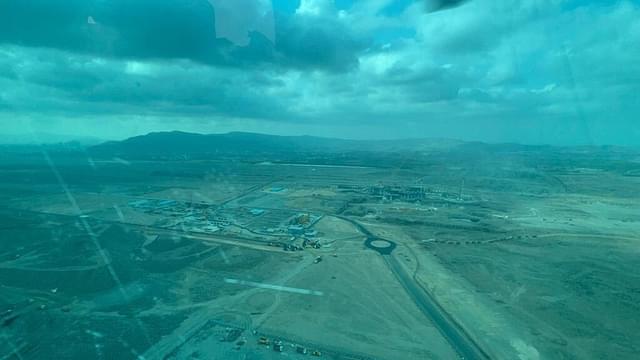
Navi Mumbai Airport is “preparing for operational readiness and airport transition (ORAT) by December 2024,” billionaire Gautam Adani said at Adani Group’s annual general meeting.
Spread across a 2860-acre site, the second international airport for the Mumbai Metropolitan Region (MMR) would create a capacity of 2 crore passengers per annum (CPPA) at one go.
The remaining three phases — 3, 4, and 5 — are planned to be implemented quickly by 2032, eventually taking the ultimate passenger capacity to 9-9.5 crore.
Implemented by Navi Mumbai International Airport Limited (NMIAL), a subsidiary of the Adani Group, the project has achieved substantial progress, with over 57 per cent of its construction now completed.
3. Mumbai Coastal Road Project (MCRP)
The much-awaited Mumbai Coastal Road Project (MCRP) will open by 31 May, Maharashtra Chief Minister Eknath Shinde said during the winter session of the state legislature on 1 January.
The coastal road (South) is a 10.58-km eight-lane grade-separated expressway that will connect Princess Street Flyover (Marine Drive) in South Mumbai with the Bandra-Worli Sea Link (BWSL) at Worli through a series of arterial roads, underground tunnels, and traffic interchanges.
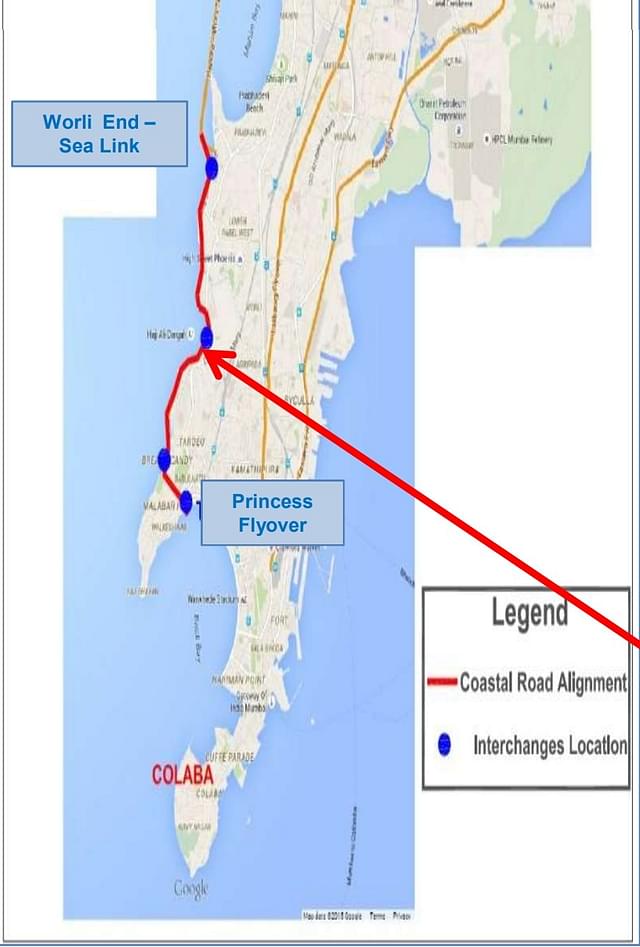
The high point of this project is the twin tunnels beneath the Arabian Sea near Girgaon Chowpatty, making it India’s first undersea tunnel system. The 2.07-km twin-tunnel system runs from Priyadarshini Park to Chhoti Chowpatty at Marine Drive, close to the landmark Chowpatty beach at Girgaum.
The twin tunnels have been excavated using a Chinese Tunnel Boring Machine (TBM), Mavala, named after Chhatrapati Shivaji Maharaj’s Mountain warfare experts. The TBM Mavala, with a diameter of 12.19 metres, is the largest tunnel-boring machine ever to be deployed in India and has been manufactured by China Railway Construction Heavy Industry Co. Ltd. (CRCHI).
Being built by the Brihanmumbai Municipal Corporation (BMC) with an estimated cost of Rs 12,500 crore, the first phase of the coastal road is poised to speed up the suburban commute to and from South Mumbai.
4. Mumbai Metro Line 3
Phase I of Metro Line 3 between Aarey and Bandra Kurla Complex (BKC) is expected to open in April 2024.
The 33.5-km long Metro-3 running along Colaba-Bandra-SEEPZ is the first underground metro corridor of Mumbai. It will connect the Cuffe Parade business district in the extreme south of the city to SEEPZ in the north-central area with 26 underground and one at-grade station.
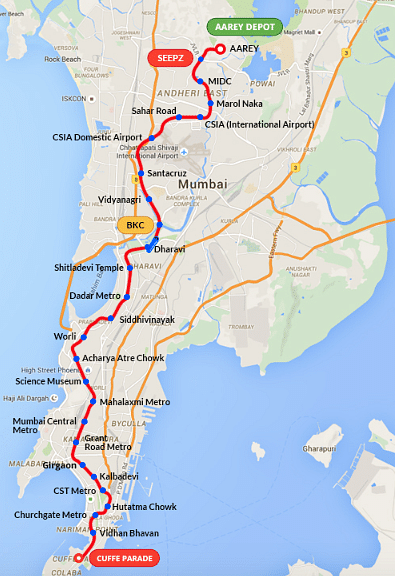
The Mumbai Metro Rail Corporation (MMRC), responsible for the implementation of Mumbai Metro Line 3, commonly known as Aqua Line, has completed more than 90 per cent of the work on the first phase. It has already acquired all nine trainsets necessary for Phase 1 operations.
MMRC has further announced that Phase II (BKC-Colaba) is set to open in June-July.
With an estimated project cost of Rs 33,000 crore, the project has received funding from several entities, including Japan’s technical and lending agency, the Japan International Cooperation Agency (JICA).
5. Samruddhi Mahamarg
The Samruddhi Mahamarg project, a 701-km expressway connecting Nagpur to Mumbai via Thane district, is set to become fully operational this year.
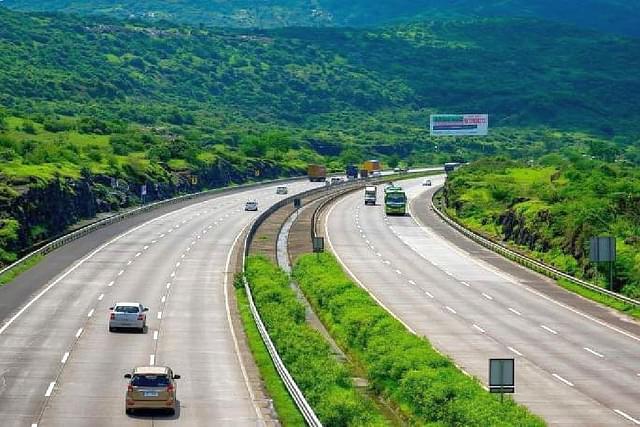
Officially named ‘Hindu Hrudaysamrat Balasaheb Thackeray Maharashtra Samruddhi Mahamarg,’ the six-lane expressway opened in two phases.
The first phase, a 520-km stretch connecting Nagpur to the temple town of Shirdi in Ahmednagar district, was inaugurated by Prime Minister Narendra Modi in December 2022.
In the second phase, an 80-km stretch between Shirdi and Bharvir village in Igatpuri taluka in Nashik district was inaugurated on 27 May 2023, by Chief Minister Eknath Shinde and Deputy Chief Minister Devendra Fadnavis.
With this, a total of 600 km out of the 701 km of the Samruddhi Expressway is now open to the public. The remaining stretch under Phase-III, between Igatpuri and Vadpe in Thane, is under construction, with about 80 km already completed.
The Maharashtra State Road Development Corporation (MSRDC), overseeing the project, is likely to operationalise the final 101-km stretch connecting to Mumbai by July 2024.
Mumbai, aside from being the capital of the state of Maharashtra, is India’s financial capital and a dominant urban landscape in the western part of the country.
For a long time, the city has grappled with poor infrastructure, making life difficult for Mumbaikars. Mumbai’s traffic congestion ranks third globally at 53 percent, resulting in individuals losing 121 hours each year due to traffic jams.
This also means that an average Mumbaikar spends 85 minutes every day stuck in traffic, and the situation exacerbates with road closures and local train disruptions during rainfall, further complicating daily life.
The opening of quality infrastructure, like the Trans Harbour Sea Link and a network of metro railways, is anticipated to unlock fresh opportunities for development and serve as a catalyst in the evolution of India’s commercial capital into a modern and efficient city.


